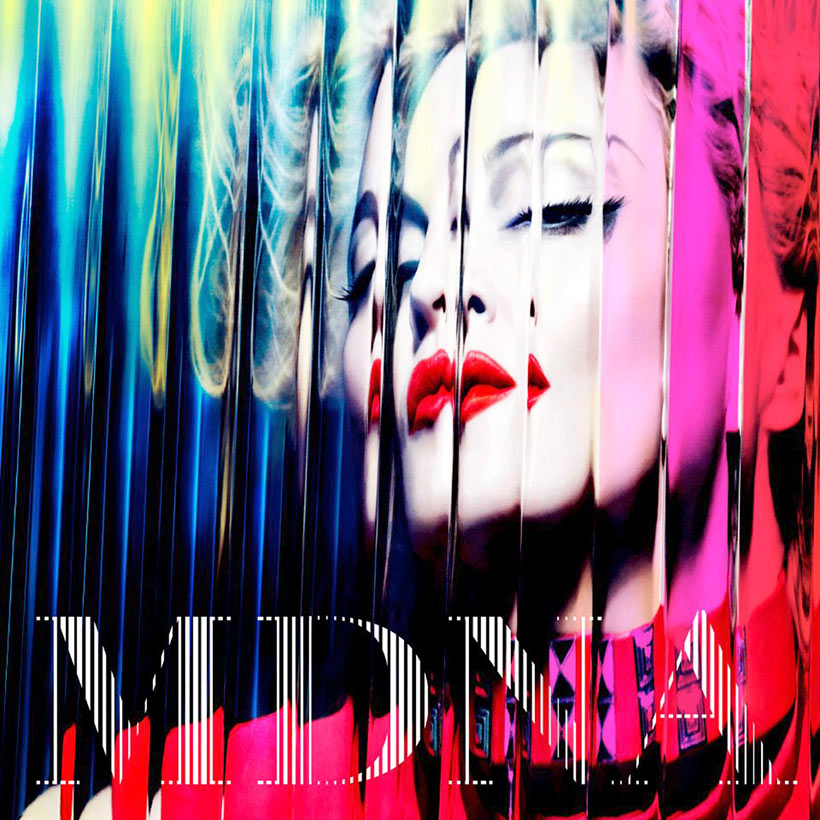Even taking Madonna’s usual work rate into account, 2012 was a startlingly busy time filled with conflicting creative and business demands. While recording her first album of the 2010s, MDNA – dubbed her disco-divorce record in some quarters – she was simultaneously coming out of the dissolution of her marriage to director Guy Ritchie, winding down the seemingly never-ending run of dates for the Sticky & Sweet Tour, balancing demanding directing work on the romantic drama movie WE (which yielded one of MDNA’s treasures), and launching a new clothing line, a perfume (Truth Or Dare) and even a range of fitness centers.
No wonder, then, that the music she was recording strove to be upbeat, energizing, and as cutting-edge as everyone expected. “It’s official! I need to move. I need to sweat. I need to make new music! Music I can dance to,” she announced on social media in the months preceding MDNA’s March 23, 2012 release. “I’m on the lookout for the maddest, sickest, most bad-ass people to collaborate with…”
Listen to MDNA on Apple Music and Spotify.
Entering a new decade
It was obvious Madonna had found her dream team when Martin Solveig, Benny Benassi, and Robyn collaborator Klas Ahlund were revealed to be signed to the project. Even William Orbit, who had so successfully steered Madonna’s greatest reinvention, on 1998’s Ray Of Light, was back, appearing on credits for half of MDNA’s tracks.
Her entry into a new decade was assured when a record-breaking, critically-lauded turn at the Super Bowl at the start of the year powered launch single “Give Me All Your Luvin’” (featuring Nicki Minaj and MIA) into the US Top 10, making it her 38th single to hit that mark. Then there was a Golden Globe win for the beautiful, underplayed ballad “Masterpiece,” from WE.
The strong dance anthem “Girl Gone Wild,” however, remains the hit that should have been. Composed with the Benassi Bros team and Jenson Vaughan, it was largely overlooked by pop radio while its Mert & Marcus-shot promo clip was censored by streaming platforms, despite the video being one of her best. The song became a major club success, but further plaudits eluded it.
An exuberant dance record that has something to say
That was plainly unfair. Though MDNA is an unapologetic dance record, softer moments, like the sweeping “Falling Free,” with its echoes of “Frozen” and other great Madonna ballads, and the spirited summer uplands of “Turn Up The Radio,” issued as a single that June, just as MDNA’s supporting tour began its global trek, are classic Madonna. Even on the album’s bonus tracks, there’s much evidence of her effervescent charisma: there’s the jaunty pop cut “Beautiful Killer”; the MIA duet “B-Day Song” is a gem; and “Best Friend” is a superb, tuneful lament.
Somewhat overlooked today, it’s worth remembering that MDNA topped the charts on both sides of the Atlantic. Madonna’s previous divorce record, Like A Prayer, had been her masterpiece, cementing her status as a musical icon and confidently straddling the divide between true pop and pop art. MDNA may not have aimed to do the same, but today it stands up as a bold attempt to create an exuberant dance record that also has something to say.




